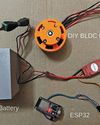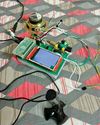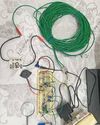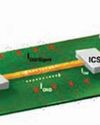
Today artificial intelligence (AI) systems are everywhere. They can do a lot of unbelievable things, like predicting behaviour and patterns.
Many big tech companies are integrating AI into their hardware as well. Apple has incorporated it into its chips to perform various machine learning (ML) operations. Even graphical processing units today are having some form of AI integrations for improved performance within them, which was not the case a few years ago.
AI comes at a cost
But AI does not come cheap. We have been using classical AI for a while now. But with the emergence of neural networks, things have changed drastically. We have reached a point where you can just put a prompt and generate images straight out of your imagination.
Neural networking was discovered twenty years ago and the reason it worked back then is computation. Adding computational layers back then was not easy and required a huge cost to implement, but that is not the case today.
Machine learning is highly mathematically intensive and requires a lot of statistical knowledge. Applying artificial intelligence solutions is not a child’s play as it requires you to study every aspect of it thoroughly. Only then will you be able to make those models and apply them.
It is not an easy task to learn tools like Tensorflow and Kiras to spin up your own servers, and that is where we need free and open AI solutions. There was a time when using ML solutions was not so easy either, as it required a lot of steps to be followed. Thankfully, that is not the case today as you can pick the model that suits your needs the best to work on.
DNA fragmentation index
Denne historien er fra June 2023-utgaven av Electronics For You.
Start din 7-dagers gratis prøveperiode på Magzter GOLD for å få tilgang til tusenvis av utvalgte premiumhistorier og 9000+ magasiner og aviser.
Allerede abonnent ? Logg på
Denne historien er fra June 2023-utgaven av Electronics For You.
Start din 7-dagers gratis prøveperiode på Magzter GOLD for å få tilgang til tusenvis av utvalgte premiumhistorier og 9000+ magasiner og aviser.
Allerede abonnent? Logg på

ESP32-Powered AUDIO-VISUAL SIREN
This sound alternator is designed to simulate the effects of a police siren, combining sound and light to create a dynamic audio-visual experience.

BLDC MOTOR With Web-Based Speed Control Using ESP32
Integrating wireless control into brushless direct current (BLDC) motor systems opens up exciting possibilities for applications such as remote-controlled cars, robots, and other innovative systems.

Pi Zero Portable BILINGUAL TRANSLATOR
This system is designed as a bilingual translator, leveraging the gTTS library to support multiple Indian languages, including English (en), Bengali (bn), Gujarati (gu), Hindi (hi), Kannada (kn), Malayalam (ml), Marathi (mr), Tamil (ta), Telugu (te), and Urdu (ur).

Op-Amp-Based VEHICLE THEFT DETECTOR
A simple, low-cost device can effectively alert homeowners or occupants if a parked vehicle is moved or tampered with.

loT SMART METER With Dashboard
Energy meters in homes track electricity usage, enabling accurate billing by governments and providers.

Choose The Right Cloud Platform For Implementing loT PROTOCOLS
Working with loT protocols like MQTT, AMQP, and CoAP on cloud platforms is essential for developing scalable and efficient lol applications. The choice of the programming platform will depend on factors like project requirements, existing skills, and target devices. Leveraging the appropriate libraries and cloud services can enable seamless integration of lol devices with cloud-based applications.

Why TMR SENSORS Lead Next-Generation Design
TMR sensors are gaining traction in industries needing precision and power efficiency. What makes them the go-to choice for modern designs?

DESIGNING PCBs For EMI Management
Electromagnetic interference can derail your PCB’s performance. EMI management is not just a technical necessity but a hallmark of exceptional PCB design.

CUTTING COSTS, NOT CORNERS: Building Large Scale Applications With Open Source Software
Here are some strategies and best practices for leveraging open source to create enterprise-grade web and mobile applications without sacrificing quality or functionality.

"We Are One Of India's Very Few State Bodies To Manage The Entire Lifecycle Of The Electronics EcosystemFrom Approvals To Subsidies."
What is Gujarat State Electronics Mission GSEM), and how is it attracting major investments in electronics manufacturing, particularly semiconductor manufacturing, to Gujarat? To delve deeper, Electronics For You’s Nijhum Rudra spoke with Manish Gurwani, the head of GSEM. Here is what he revealed...